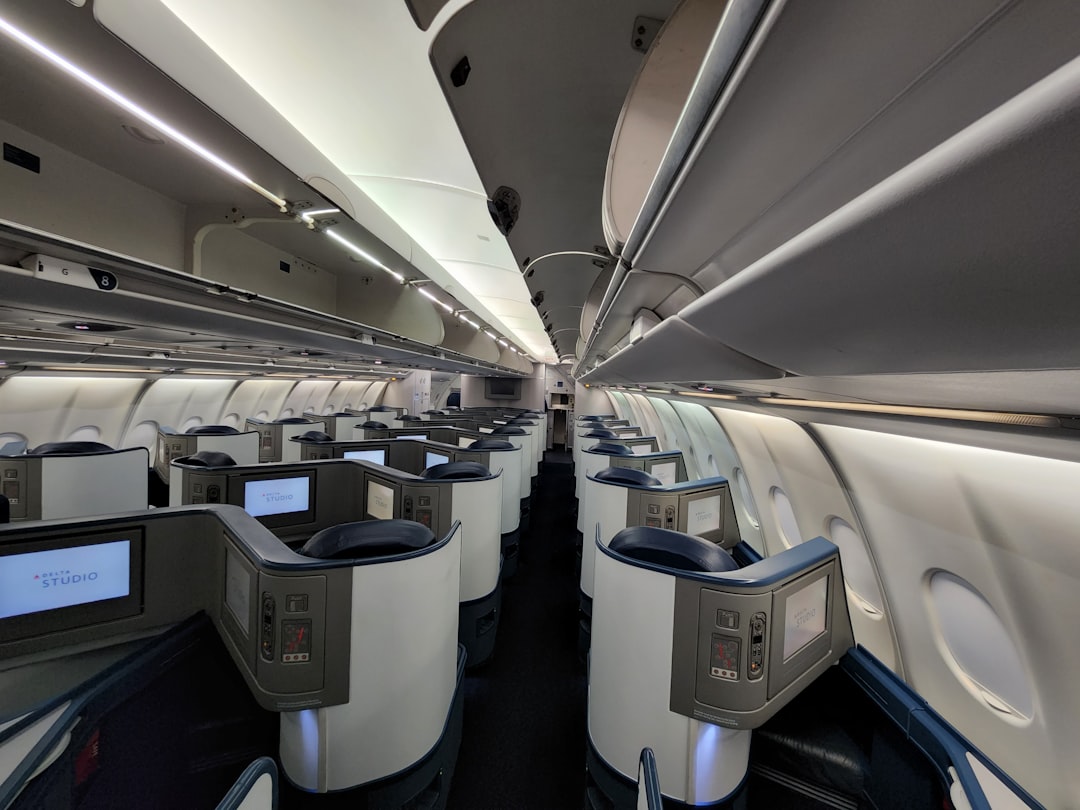We’ve all been there: crammed into a tiny airplane seat, counting down the minutes until landing, wishing we’d chosen differently. With air travel constantly evolving, finding that sweet spot of comfort can feel like a game of chance. But what if it didn’t have to be? As of late 2024 and heading into 2025, airlines are making subtle changes, and knowing where to sit can make all the difference for your journey. Let’s dive into the world of airplane seating and uncover the secrets to a truly comfortable flight! 😊
Understanding Your Options: The Basics of Airplane Seating 🤔
Before we get into the nitty-gritty, let’s quickly review the main classes of service and what they generally offer in terms of comfort. Each class caters to different budgets and comfort expectations, but even within a single class, significant variations exist.
Most airlines offer a tiered system: Economy, Premium Economy, Business, and First Class. While Business and First Class typically guarantee superior comfort with more space and lie-flat options, the real challenge for many travelers lies in maximizing comfort within the Economy or Premium Economy cabins. Understanding the nuances of each can help you make an informed decision.
Newer aircraft models, such as the Airbus A350 and Boeing 787 Dreamliner, often feature slightly wider seats, better cabin pressurization, and enhanced humidity levels, which can significantly improve overall comfort, especially on long-haul flights.
The Science of Comfort: Key Factors to Consider 📊
Comfort isn’t just about legroom; it’s a combination of several factors. When evaluating airplane seats, consider these crucial elements that directly impact your experience. Airlines are constantly innovating with lighter materials and slimmer seatbacks to create a perception of more space, even if the actual dimensions remain similar.
The average seat pitch in economy class typically ranges from 28 to 32 inches, while seat width is usually between 17 and 18 inches. These seemingly small differences can have a huge impact on your comfort, especially on longer flights.
Comparing Seat Features Across Classes
| Category | Economy Class | Premium Economy | Business/First Class |
|---|---|---|---|
| Seat Pitch (Legroom) | 28-32 inches | 35-38 inches | 40+ inches (often lie-flat) |
| Seat Width | 17-18 inches | 18-19 inches | 20+ inches |
| Recline | Limited (2-4 inches) | Enhanced (5-7 inches) | Significant or lie-flat |
| Amenities | Basic IFE, USB charging (on newer planes) | Larger IFE, power outlets, enhanced meal service | Premium IFE, gourmet meals, lounge access |
While seat pitch and width are good indicators, always check specific airline and aircraft configurations using tools like SeatGuru or SeatLink. Seat dimensions can vary even within the same airline depending on the specific plane model.
Key Checkpoints: Remember These Essentials! 📌
Made it this far? Great! With so much to consider, it’s easy to forget the most crucial points. Let’s quickly recap the top three things to keep in mind for your next flight.
-
✅
Prioritize Legroom for Long Flights
For journeys over 3-4 hours, legroom is paramount. Exit rows and bulkhead seats offer the most, but often come with trade-offs like fixed armrests. -
✅
Utilize Seat Maps & Reviews
Websites like SeatGuru are invaluable for checking specific aircraft layouts, seat dimensions, and passenger reviews before you book or select your seat. -
✅
Consider Your Travel Style
Are you a window gazer or an aisle stretcher? Do you need to get up frequently? Your personal preferences should heavily influence your final seat choice.
Strategic Seat Selection: Where to Find Your Oasis 👩💼👨💻
Now that you know the factors, let’s talk strategy. The “best” seat is highly personal, but there are general guidelines that can significantly improve your experience. Choosing between a window, middle, or aisle seat is often the first decision, but there’s more to it than that.

For instance, exit row seats are a perennial favorite for their generous legroom, but they often come with fixed armrests, which can slightly reduce seat width. Bulkhead seats also offer extra legroom, but you might be close to lavatories or galleys, which can be noisy.
If you’re sensitive to turbulence, seats over the wing tend to experience less movement. For a quieter flight, aim for seats further away from the lavatories and galleys, typically towards the front of the cabin or just behind the wing.
Real-World Scenario: Choosing the Best Seat for a Long-Haul Flight 📚
Let’s imagine you’re planning a 10-hour flight from New York to London. You’re flying economy, but comfort is a priority. How do you choose?
Traveler’s Situation
- **Flight Duration:** 10 hours (long-haul)
- **Class:** Economy
- **Priorities:** Legroom, ability to get up easily, minimal disturbance.
Considerations & Decision Process
1) **Check Seat Map:** First, use a tool like SeatGuru to view the specific aircraft layout for your flight. Look for green-rated seats.
2) **Evaluate Exit Rows:** An exit row aisle seat would be ideal for legroom and easy access. Check if it has fixed armrests and if that’s a deal-breaker for you. Be aware of emergency exit responsibilities.
3) **Consider Bulkhead:** If exit rows are unavailable, a bulkhead aisle seat is a good alternative for legroom. However, be mindful of potential noise from galleys or lavatories, and the lack of under-seat storage during takeoff and landing.
4) **Standard Aisle:** If premium economy or extra-legroom seats aren’t an option, a standard aisle seat towards the front or middle of the cabin (away from lavatories) offers the best balance of easy access and minimal disturbance compared to a window or middle seat.
Final Result
– **Optimal Choice:** An aisle seat in an exit row, if available and suitable for your needs.
– **Second Best:** An aisle seat in the bulkhead row, weighing the pros and cons of its location.
By systematically evaluating your options and considering your personal preferences, you can significantly increase your chances of securing a more comfortable seat, even in economy class. It’s all about being prepared and knowing what to look for!
Conclusion: Your Journey to a More Comfortable Flight 📝
Choosing the right airplane seat is more than just a minor detail; it’s a key factor in ensuring a pleasant and comfortable journey. From understanding seat dimensions to strategically picking your spot on the plane, a little planning can go a long way. Remember that comfort is subjective, so what works for one traveler might not work for another.
Armed with these tips and the latest insights for 2025, you’re now better equipped to navigate the complexities of airplane seating and find your personal oasis in the sky. Don’t settle for discomfort – take control of your travel experience! What’s your go-to seat choice, and why? Share your thoughts in the comments below! 😊
